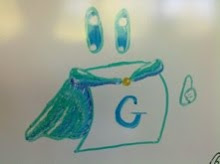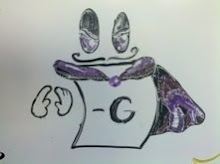What did I want? Some nice game boards I could leave on my desk. Perhaps I could "force" visitors to my office to play with me. I've often found there was no better way to begin research on a game than to actually play with people. It doesn't necessarily matter whether your opponent is a novice or a master; facing someone who doesn't share your mind and watching the game play out is an extremely helpful tool. Between unexpected moves and the ability to focus on just one side of the game (and perhaps some other psychological things I'm unaware of) I often am looking for opponents for my games. (Sometimes playing against yourself is useful and necessary also: it is easy to "implement" one player to follow a certain strategy and then see if the other half of you can beat it.)
Finding actual opponents is difficult, though. Consider the following exchange:
Me: "Hey, do you want to try out a new game with me? I get the feeling it's really really hard to play well."
You: "Uhhhh...."
The readers of this blog might be inclined, but it's easy to see that people wouldn't jump at this chance. Now consider the added dialogue when impartial games are concerned:
Me: "You're still waffling... I wanna let you know this game is really cool. It's impartial!"
You: "What does that mean?"
Me: "It means we don't have our own pieces. Good boards for me and good boards for you look exactly the same!"
And Zoom! They're off. This is even harder when I add that explaining the rules to a game such as Dictator (a voting game) will take over ten minutes. See ya!
It was great to go to GenCon a few weeks back, but even then I think I may wind up spending more time studying games such as Tsuro than actually playing them.
This line has often actually been used in part of my "academic profile". On the web site from my Asprey lecture at Vassar:
When not teaching, he creates combinatorial games and analyzes their computational complexity. This, unfortunately, does not leave him enough time to actually play them.As it is, I barely have enough time to spend even analyzing games.
... maybe the best plan is to just print and laminate more game boards :)


